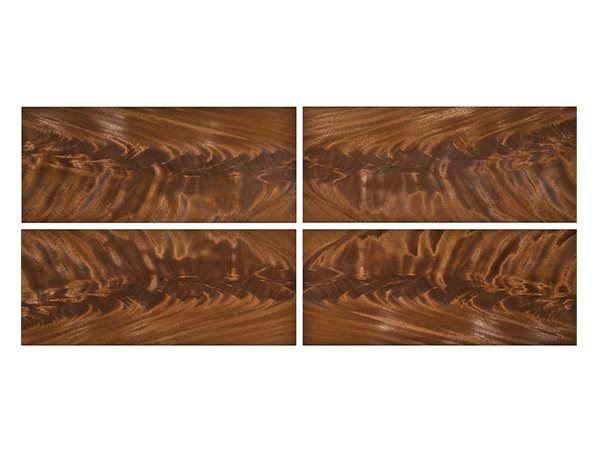
I just used an aniline stain from Behlen’s and I am getting a green metallic type sheen from it. The color I used is dark mahogany. The mix I used was 15 ounces of alcohol; 1-ounce warm water and 1-ounce stain powder. I let it stand for one hour and applied it to mahogany veneer – to which I’d already applied a grain filler, sanded that down, wiped it with alcohol, and blown it off. Any ideas what I did wrong?
Michael Dresdner: The color is not the issue. What’s important is that you’ve violated one of the rules of using dyes – that they go only onto raw wood. That means they should go under the filler, not over it.
Dyes, whether aniline, metallic, mono-azo, di-azo, or others, are crystals once their solvent evaporates. The crystalline structure has the interesting habit of reflecting light at the opposite end of the color wheel from the color of the dye. In other words, a red or reddish dye, left to crystallize on a surface, will reflect a green cast in raked light.
The problem is not the color, but the fact that excess dye is on the surface. Dye should be absorbed into wood, and any that is not absorbed should be wiped off completely. Think about it — dye reverts to its powdery crystalline form once the solvent evaporates. If you have a layer of powder (any type, really) on top of a piece of wood, you have a good likelihood that whatever you put on top of it will not adhere. Of course, if you apply a finish that re-dissolves the dye, you will get better adhesion, but also bleeding as the dye “walks up” through the solvent.
Although you did not mention it, I should remind readers that alcohol and oil soluble dyes should be strained or filtered prior to use. There is often a precipitate of agglomerated dye that collects in the container, and this can also contribute to adhesion and color problems. On the other hand, straining is usually not needed with water-soluble dyes or with liquid dye concentrates.
Next time, apply the dye to the raw wood, and wipe it ALL off while it is still wet. It will put the dye down into the wood and leave none on the surface to cause problems. As a bonus, you won’t see a green reflection, either.
Simon Watts: If you want to darken the mahogany a solution of potassium dichromate is the classic means. The stronger the solution the greater the effect. This is not a stain – it reacts with the wood in a way I don’t have space to explain.







